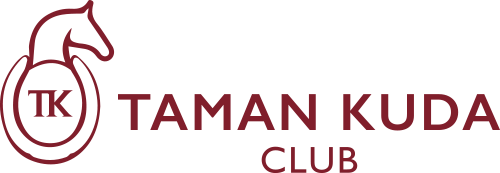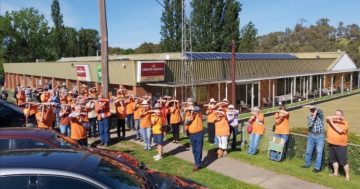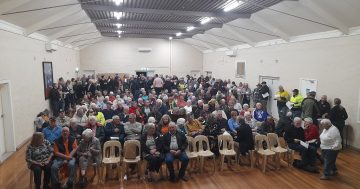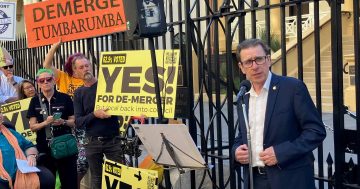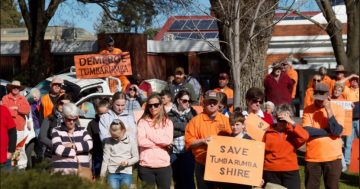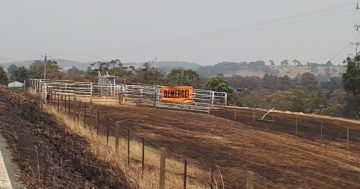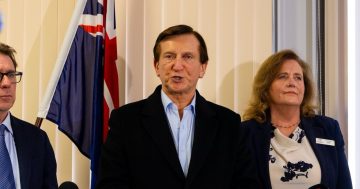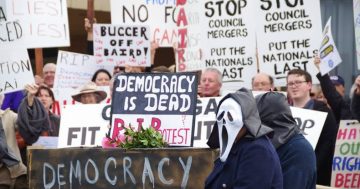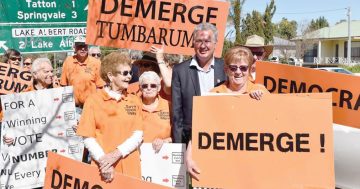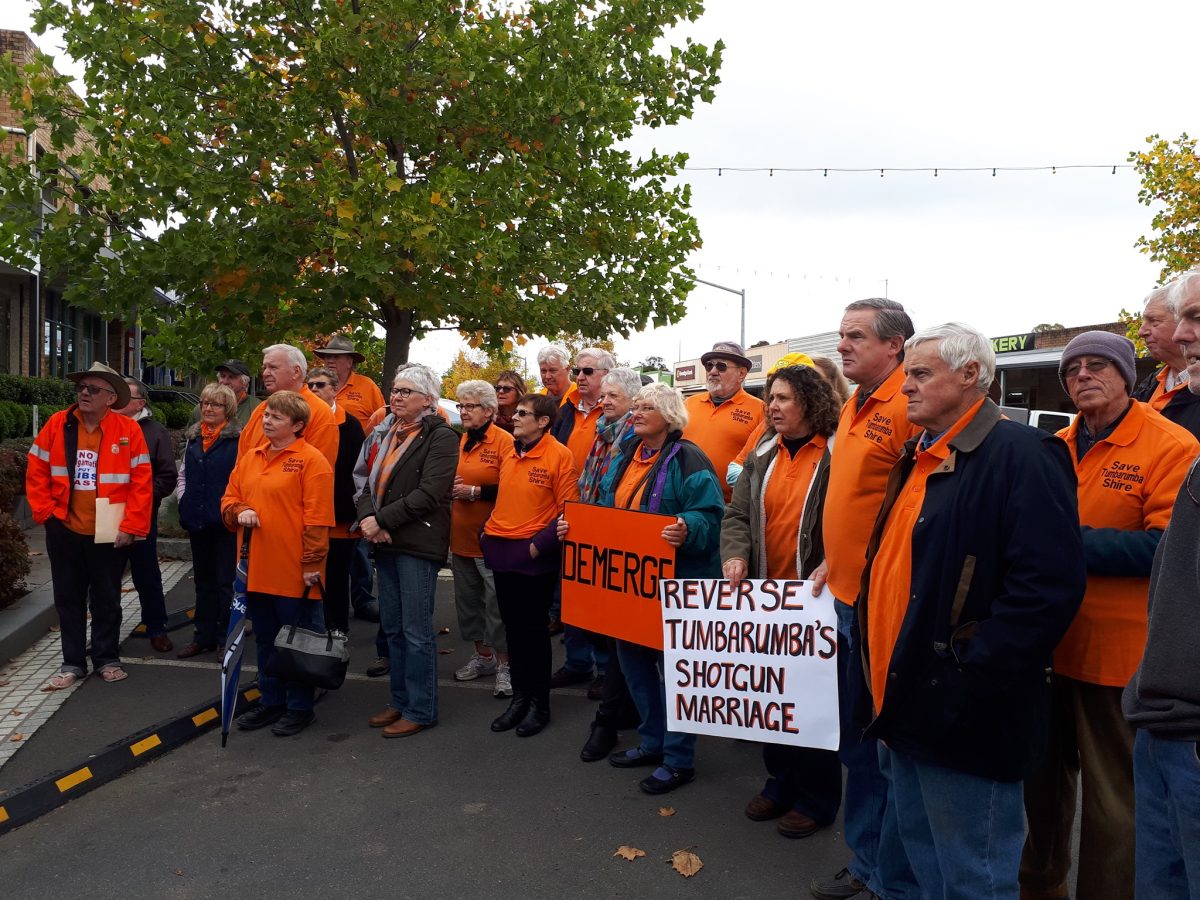
After years of unrest, Snowy Valleys voters are heading to the polls on Saturday 29 November to decide whether their local council should be demerged. Photo: Save Tumbarumba Shire.
Snowy Valleys residents face a defining moment on Saturday 29 November, when they vote on whether to dismantle their merged local government.
The outcome will determine whether the 2016 merger of Tumut and Tumbarumba councils survives, a decision that could set the tone for other amalgamated councils across NSW.
The question posed to voters – as prescribed under the Local Government Act 1993 – is:
“Should the Snowy Valleys Council be de‑amalgamated and the Tumut Shire and Tumbarumba be reconstituted as separate local government areas?”
This ballot represents nearly a decade of sustained community divide, which can be traced back to the NSW Government’s 2014 Fit for the Future reforms, which followed recommendations from the Independent Local Government Review Panel.
The program was designed to make councils more efficient and financially sustainable, but in practice it set the stage for a wave of forced mergers.
Tumbarumba, rated “Fit,” and Tumut, rated “Not Fit,” were paired under the policy – a decision that many locals saw as unjust and unnecessary, sparking a backlash that never really faded.
The community-led Save Tumbarumba Shire group spearheaded the effort to reverse the merger, vehemently arguing that the new structure had stripped the town of its local voice and unique identity.
The community’s formal de-amalgamation bid, lodged in 2020, was summarily rejected by then-minister for local government Shelley Hancock in July 2021, despite the fact the Local Government Boundaries Commission (LGBC) had recommended the proposal proceed.
Undeterred, Snowy Valleys Council (SVC) itself commissioned a second proposal in 2023, assessing the feasibility and financial implications of splitting the council.
That review formed the basis for the LGBC’s 2025 recommendation to hold a referendum, a proposal which was formally accepted by the Minister for Local Government Ron Hoenig in August 2025, finally giving residents the chance to decide their council’s future.
He described the merger as having “proven to be another local government disaster inflicted upon regional NSW communities”, and declared the decision was “firmly in the hands” of the community.
The minister has made it clear that as part of the referendum, residents must be made aware they will be facing rate increases and other costs to support the demerged councils, so they can make an informed decision.
A LGBC report estimates the transition to split Snowy Valleys Council would cost around $4.8 million (plus CPI), with preliminary allocations of $1.414 million for a restored Tumut Shire and $932,000 for Tumbarumba Shire – covering administrative restructuring, asset division and governance set‑up.
The Local Government Act 1993 enables the minister to provide a grant to offset the financial impacts of a demerger, but Mr Hoenig says the two new councils must submit detailed proposals before any money is released.
Beyond the transition cost, the LGBC warns that in a restored Tumut Shire rates could rise by almost 15 per cent over seven years, while in Tumbarumba residents face increases of 45‑65 per cent, alongside higher fees for services such as water and sewer.
Communities across the LGA are already feeling the impact of rising rates and structural reforms, as the Snowy Valleys Council (SVC) forecasts an operating deficit of around $3 million for 2025‑26, excluding capital grants.
This comes despite the council having implemented a permanent special rate variation (SRV) of nearly 36 per cent between 2022 and 2024.
These financial pressures are further compounded by the state regulator IPART’s rejection in May 2024 of SVC’s application for an additional 42.38 per cent SRV over three years (2024‑27).
Despite applying the standard annual rate rise, the council still confronts a major funding gap, putting long-term stability under the merger at risk.
The 29 November referendum is being run by the NSW Electoral Commission, and voting is compulsory for all enrolled electors in the Snowy Valleys local government area.
However, it will pass only if a majority of all enrolled electors – not just a majority of those who vote – support de-amalgamation, meaning even strong support at the polls could fail if overall participation is too low.
When the electoral roll for the area closed at 6 pm on Monday 20 October 2025, the NSW Electoral Commission confirmed the final number of enrolled electors, including residential and non-residential voters (such as property owners and rate-paying lessees who were processed in the weeks leading up to the 20 October cut-off), was confirmed at 10,396.
The minimum number of formal ‘yes’ votes required for the Snowy Valleys Council de-amalgamation referendum question to be carried is 5199.
Already demerger proponents have voiced concerns the the LGA’s population distribution will give the larger population centre, being Tumut with 6748 residents, a decisive veto over the historical epicentre of the de-amalgamation movement – Tumbarumba – with roughly 1900 residents.
Snowy Valleys Mayor Julia Ham has encouraged the community to familiarise themselves with the financial and service implications of de-amalgamation, including potential rate increases and transition costs.
All de-amalgamation documents are available on council’s website, with printed copies for viewing at libraries and customer service counters.
She said the council had distributed a letter and fact sheet via post to all households in late October.
“The letter and referendum fact sheet outlines the key points and potential financial implications detailed in the De-amalgamation Implementation and Financial Sustainability Plans to help residents make an informed decision,” said councillor Ham.
As part of its mandated process to further inform the community about the proposed split and its financial implications, SVC has hosted several community information sessions in Tumbarumba, Tumut, Batlow and Adelong this month.
Pre‑polling kicks off on Saturday 22 November and runs until Friday 28 November, while postal vote applications close on Monday 24 November.
Voting day is Saturday 29 November, with postal votes closing on Friday 12 December.
The count is expected to be completed by Monday 15 December, with results declared the next day.



